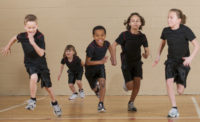In 2017, 2.5 million high school athletes reported having at least one concussion. 40% of athletes admitted they have had more, but didn't speak up.
The scariest part about concussions is that some athletes will play it off as a headache, but Sanford Physical Therapist Brad Reed says, "It's actually the brain rattling around inside the skill. The chemistry in the brain becomes mixed up if you will."
Reed encourages players not to ignore the headache. It's better to be evaluated than experience second impact syndrome. This happens when a second concussion takes place before the first concussion symptoms subside. The swelling of the brain happens so rapidly that it could lead to death.
"So that's where we have to educate the student to be honest with themselves," says Reed.
A study done by the Center for Disease Control and Prevention states that concussions are seen at a high rate in high school athletes. With the age range being between 13 to 18, this makes concussions concerning.
Reed says, "They're still developing the brain. Where the person in college, their brain is developed. Yet, we still have to protect them, but we need to protect that younger age group."
There are some ways to prevent concussions and that's with education. Reed says, "The biggest thing that we can do to alleviate a lot of that is to know how to tackle. Keeping the head up. Not using the crown of the head to use as a spear."
But coaches and players aren't the only ones who should be learning. Parents can help by knowing the signs and symptoms.
"The biggest thing I always tell them is their eyes. The eyes will not lie because that's when they look at them they'll have what I call the frosted look. They're looking at you, but they're not seeing what's there. So, that's one of the things we tell them to look at," says Reed.
For more on concussion evaluations and a list of symptoms, visit Sanford Concussion Services.
Source: Valley News Live (Fargo ND)






